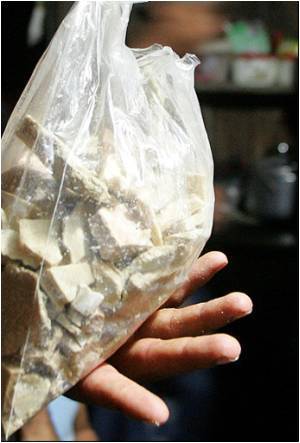
"The key question that the study may answer is why one person is more vulnerable to the effects of cocaine than another. What we found is that a specific microRNA exerts enormous control over the response to the drug. When it is increased in the brain, it protects against addictive behaviour, while a reduction raises vulnerability to addictive behaviours. The practical outcome of increased microRNA-212 expression is that it slams the brakes on any desire to take the drug," Nature quoted team leader Paul Kenny as saying.
MicroRNA-212 is a type of small non-protein coding RNA that can regulate the expression levels of hundreds or even thousands of genes.
As such, microRNA-212 and other types of microRNAs are considered "master regulators" of gene expression.
Because of their ability to coordinate the expression of related genes responsible for brain structure and function, it is thought that microRNAs might play important roles in complex psychiatric disorders, but little has been known about their involvement in addiction-until now.
The new findings suggest that individuals with serious addiction problems may have damaged supplies of this particular non-coding RNA, or the microRNA may not function properly, said Kenny.
Advertisement
In the study, the scientists set out to see how the brain changes in rats with extended or limited exposure to the drug using a model of compulsive drug taking developed by Scripps Research scientist George Koob.
Advertisement
"When we used a virus to drive a large over-expression of the microRNA, there was no effect on the behaviour of the limited-access animals. In the extended-access animals, however, their behaviour changed abruptly - they took less and less cocaine. In fact, their intake became so low that it appeared they actively disliked the drug. Conversely, when we blocked the actions of the microRNA, the extended access animals began to consume the drug in a compulsive-like manner. MicroRNA-212 is therefore a protective factor helping to prevent the loss of control over drug-taking behaviour. Individual differences in microRNA-212 signalling are therefore likely to play a key role in determining vulnerability to cocaine addiction," said Kenny.
In the study, the scientists took their investigation a step further to examine the molecular signaling mechanisms producing this effect.
They found that extended consumption of cocaine was associated with an overstimulation of various neurotransmitters in the brain, which increased the production of cAMP (a messenger associated with many biological processes), which in turn activated CREB signaling.
These changes led to the increase in expression of microRNA-212.
Surprisingly, the scientists found that the increases in microRNA-212 induced by CREB in turn dramatically amplified the actions of cocaine on CREB signalling, establishing a CREB-microRNA-212 "loop."
In effect, the microRNA stimulated the pathway in the brain that increases aversive reactions to cocaine, thereby decreasing the motivation to consume the drug.
The study was published in the prestigious journal Nature.
Source-ANI












